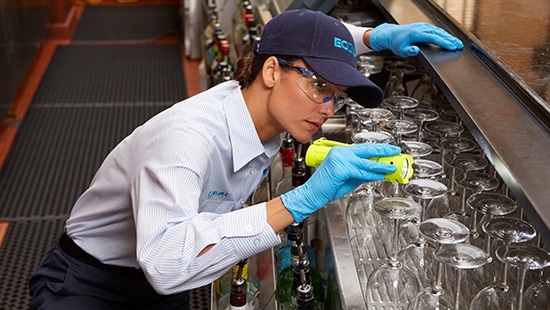Extermination Services for Chicago Apartments: Maintain Your Space Pest-Free
A Comprehensive Guide to the Different Kinds of Bug Control Approaches
With the myriad of pest control methods available, it can be frustrating to discover the most effective service for a specific bug problem. In this extensive overview, we will certainly explore these various types of pest control techniques, offering insights right into their applications and advantages. By the end, you will certainly have a clearer understanding of which approach may be the finest fit for your pest control needs.
Chemical Bug Control Approaches

One typical kind of chemical parasite control is insecticides. Insecticides are chemical substances that are especially created to kill or ward off bugs. They can be used in numerous forms, such as sprays, baits, or dusts. Pesticides target certain parasites, such as mosquitoes, termites, or ants, and can be used both indoors and outdoors.
One more kind of chemical pest control is rodenticides. These are chemical compounds created to manage populations of rodents, such as rats and mice.
Herbicide, additionally referred to as herbicides, are another kind of chemical pest control method. Herbicides are made to selectively eliminate unwanted plants, called weeds, without causing harm to preferable plants. They are frequently used in farming, landscape design, and horticulture to regulate the growth of unwanted plants.
While chemical insect control techniques can be extremely reliable in removing bugs, it is very important to utilize them deliberately and comply with safety guidelines. Overuse or misuse of chemical pesticides can have adverse effect on human health and wellness and the environment. It is critical to utilize these approaches responsibly and take into consideration different insect control techniques whenever feasible.
Biological Pest Control Approaches
Biological pest control methods involve using living microorganisms or natural materials to manage and regulate pest populaces. Unlike chemical methods, which usually count on synthetic pesticides, organic control methods utilize the all-natural adversaries of insects to control their populaces. This strategy is thought about more eco-friendly and sustainable, as it decreases using unsafe chemicals and decreases the risk of pesticide resistance.
One commonly used organic bug control approach is the introduction of natural predators or bloodsuckers. Ladybugs are introduced to control aphids, while particular wasp types are released to target caterpillars. These killers and bloodsuckers eat pests, lowering their numbers and avoiding problems.
One more organic control technique is using pathogens. Particular bacteria, infections, and fungi can be employed to contaminate and eliminate certain insects. For instance, the germs Bacillus thuringiensis is commonly made use of to regulate caterpillars, as it creates toxic substances that are lethal to these insects.
Organic control methods can additionally include making use of scents or natural substances that interrupt the mating patterns of parasites. By interfering with their recreation, these techniques help to reduce pest populations with time.
While biological parasite control techniques are usually efficient, they might need longer periods to accomplish desired results contrasted to chemical techniques. In addition, cautious consideration needs to be provided to the option and release of natural opponents to avoid unintended injury to advantageous microorganisms or ecological communities.
Physical Insect Control Methods
To successfully take care of and regulate pest populations, alternative bug control techniques called physical pest control techniques are used. These techniques entail the use of physical obstacles, catches, or devices to avoid bugs from accessing or harming property. One common physical bug control approach is making use of screens or internet to maintain pests out of structures or gardens. These screens are usually constructed from fine mesh material that permits air flow while preventing bugs from getting in. Another physical insect control technique is the setup of fencings or wall surfaces to maintain bigger parasites, such as deer or bunnies, out of gardens or agricultural fields. These barriers physically block the bugs' accessibility to the location, reducing the possibility for damage. Additionally, catches and gadgets can be made use of to catch or repel pests. Sticky traps can be placed in locations where pests are a trouble, and the news pests come to be stuck to the sticky surface area. Ultrasonic gadgets can likewise be utilized to send out high-frequency sounds that are unpleasant to pests, causing them to leave the area. Physical pest control methods are an ecologically friendly choice to chemical pesticides, as how to do pest control they do not rely upon the usage of unsafe chemicals.
All-natural Pest Control Approaches
Natural bug control approaches offer a sustainable and eco-friendly technique to managing and removing parasites. One of the most typical natural pest control approaches is organic control. By embracing these natural parasite control techniques, individuals and communities can properly take care of bugs while reducing the negative influences on the atmosphere and human health.
Integrated Pest Monitoring (IPM)
Integrated Insect Monitoring (IPM) is a detailed and organized method to pest control that incorporates various methods and techniques to successfully take care of insects while decreasing making use of chemical pesticides. IPM aims to preserve pest populaces below the economic injury degree by utilizing a mix of social, biological, and chemical control techniques.
Cultural control methods involve customizing the atmosphere to make it much less positive for bugs. This can include techniques such as plant turning, proper sanitation, and making use of immune plant ranges. By developing negative problems for parasites, social control methods can considerably minimize bug populaces.

Chemical control methods are used as a last option in IPM. They involve the targeted and wise usage of chemicals to handle bug populaces. Unlike traditional insect control methods, IPM aims to minimize making use of chemical pesticides by using alternate techniques.
Integrated Bug Management (IPM) is use this link an aggressive technique that concentrates on lasting bug management instead of counting entirely on reactive actions. By integrating multiple control approaches, IPM supplies a more sustainable and environmentally friendly strategy to pest control.
Conclusion
It discussed chemical, organic, physical, and all-natural insect control approaches, as well as the incorporated parasite management method. By comprehending these numerous methods, individuals can make educated decisions on which bug control approach is most suitable for their certain demands and choices.